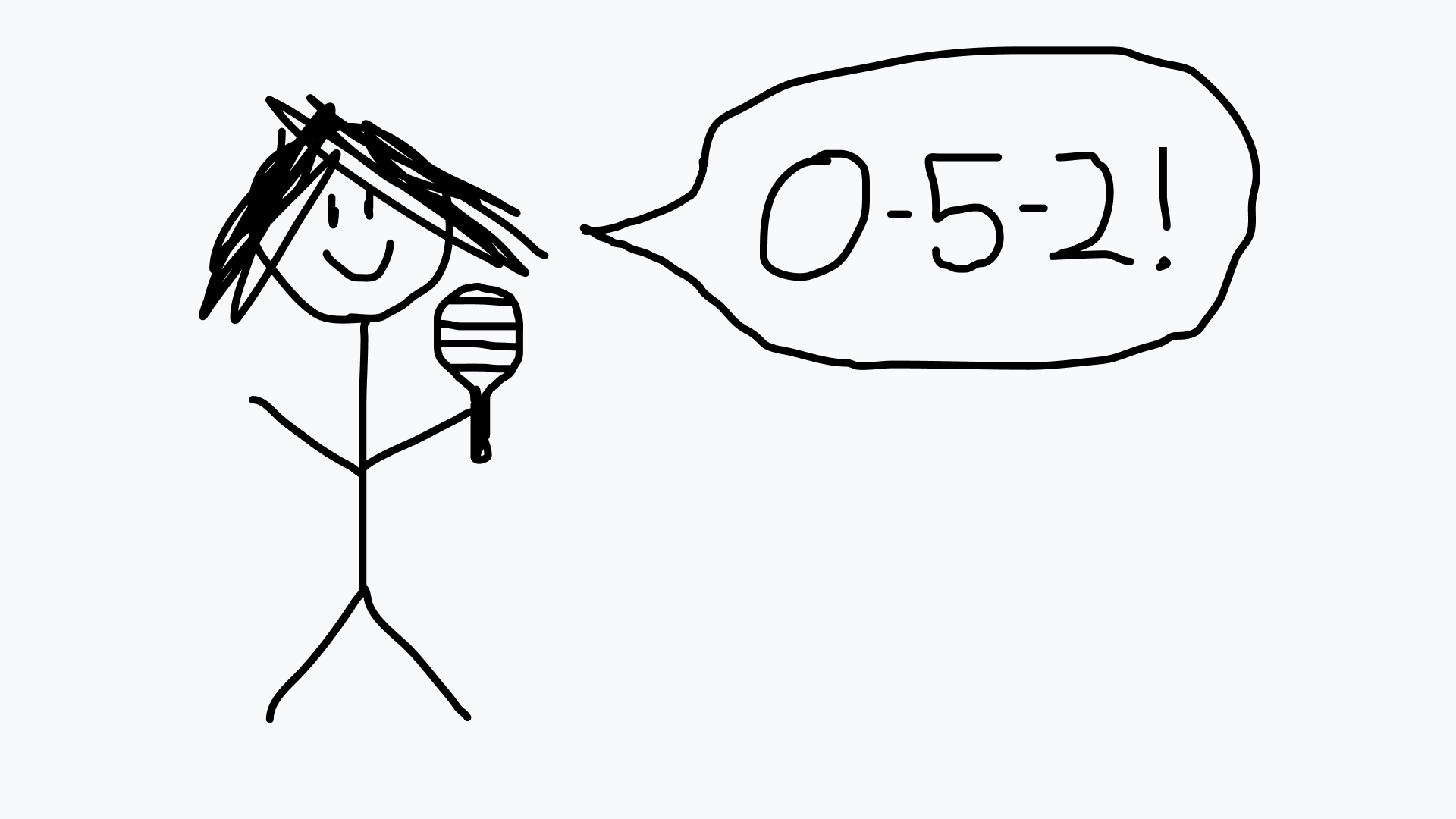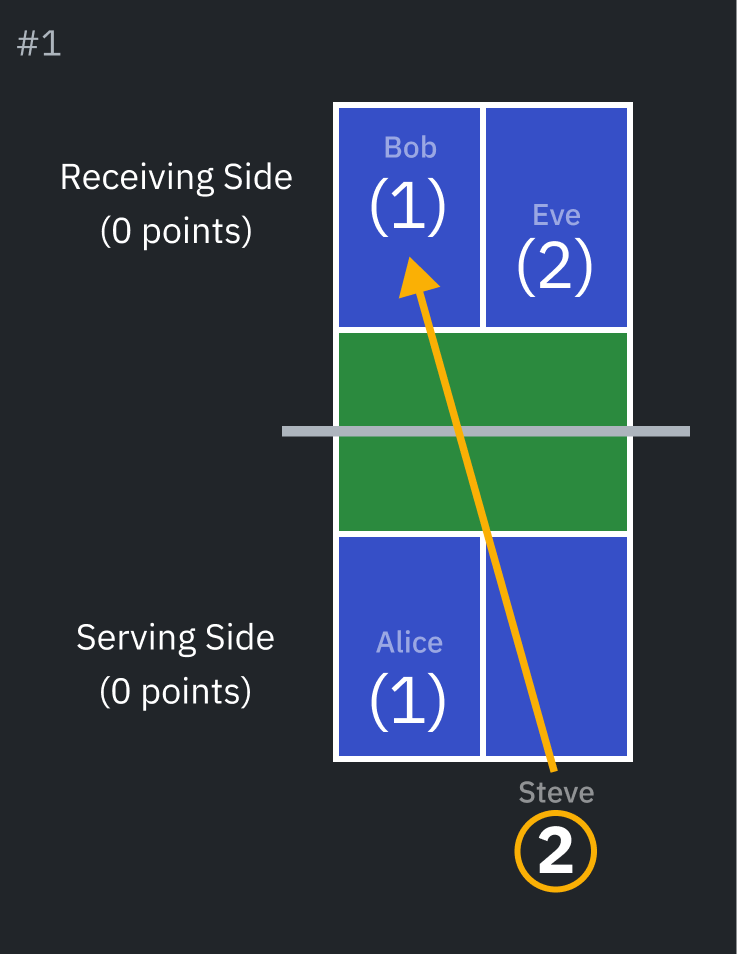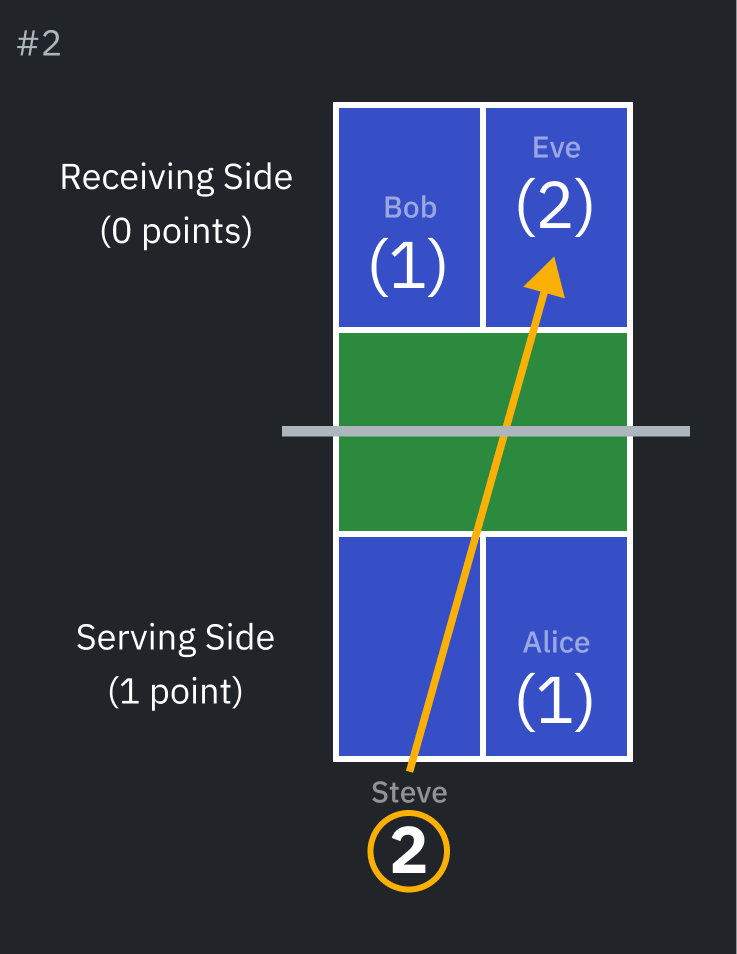How Does Turn Ordering Work in Doubles Pickleball?
Alternate title: Putting the “Ball” in Pickle
I had a blast playing pickleball for the first time yesterday. While I can still barely hit the ball, my friends did a great job getting me into the game. However, I could not for the life of me figure out how the turn ordering or player numbering worked! Nobody managed to cohesively explain this to me, and I left the game infuriated and confused.
Today, still frustrated, I did some online research and didn’t find a satisfactory explanation anywhere. I’ve also never played tennis or any other racquet sport, so I’m not familiar with terms like “rally” and found a lot of resources assumed similar prior knowledge.
So, after grilling my friends about various permutations of possible moves, I decided to write a short explainer that would’ve helped me understand pickleball.
If you scroll down to the bottom, you’ll also find a helpful flowchart.
Serves, Rallies, and Faults
Breaking pickleball down into digestible units helped me a lot.
A rally starts when a player serves the ball and ends when one team commits a fault. Faults include anything from the serving player hitting the ball outside of the playing area — this happened a lot in our game, since I am incapable of properly serving — to just missing the ball. To emphasize: every serve begins a rally that ends in a fault. Faults are always the same concept! There is no meaningful difference between screwing up a serve and missing the ball when it comes back to your team after many back and forths.
One team is the serving team, and the other team is always the receiving team. At the start of the game and whenever the serving team changes sides, server numbers reset and are assigned to all players. The players on the right (from the perspective of each team) receive server number 1 and the left players receive server number 2.
There’s one exception to this: only one fault is allowed for the first serve of the game, so the first round starts with the right player receiving server number 2.
The serving player announces before each rally:
“<serving team’s score> <receiving team’s score> <serving player’s server number>”

The player on the right — player 2 at the start of the game, normally player 1 at the start of a round — of the serving team begins the game by calling out “0-0-2” and then serving the ball diagonally across the court. Only the serving team can ever win a point.
In a normal round, two things can happen:
- If the serving team commits a fault (either a failed serve or the opposing team “scores”) all positions and server numbers stay the same and player 2, on the left at the start, serves next. No points are earned by any team.
- If the serving team scores (in other words, the receiving team commits a fault) the serving team wins a point. Then, the members of the serving team switch positions, keeping server numbers the same, and the player who served last time serves.
Wait, so when you switch sides you keep your number?
Yep!
… But you keep your number for the whole game, right?
Nope, of course not, this game can’t be reasonable!
After the first round, if the serving team screws up after player 1 served, player 2 gets to serve. When player 2 eventually screws up, sides switch and the receiving team becomes the serving team and the ball switches sides. Nobody changes position, but now all the server numbers are reassigned based on current positions. 1 is assigned to whoever is on the right, and 2 is assigned to whoever is on the left. Again, this only happens when the serving side changes.
As long as the serving team doesn’t screw up, the servers keep their numbers and the same person keeps serving, alternating sides every point.
Example Game
Let’s look at a simple example game. The court starts like this, with the serving player circled:

(Steve is outside the court because you always have to serve from behind the outer line. Eve is also a little closer to the center than Bob; this is a common strategy to make it easier to hit the ball.)
The first player on the serving team serves the ball diagonally across the court (shouting, “0-0-2”). Let’s say the receiving team hits it back, the serving team hits it back, and the receiving team misses the ball — committing a fault. The serving team wins a point, and players 1 and 2 on the serving team physically switch positions, (keeping the same server numbers). Since player 2 served last time (because this is the first round), they serve again from the left position (“1-0-2”):

Next, Steve does another great serve, the receiving team hits the ball back, and Steve’s team screws up and misses the ball, or perhaps hits it out of the court. Whatever happened, the serving team committed a fault. The receiving team still can’t score a point, but, because player 2 screwed up, it’s time for the ball to go to the opposing team!
All the server numbers reset. The receiving team becomes the serving team, the serving team becomes the receiving team, and the rightmost players become player 1s:

Player 1 of the opposing team calls out the score (“0-1-1”) and serves the ball. The play continues.
Additional Rules
I have a couple notes to make about what counts as a fault.
First of all: the serving player always has to serve into the square of the diagonally opposite player. If they don’t serve diagonally, that’s a fault and play changes players.
There is also something called the double bounce rule. The ball has to bounce once on both sides of the court before teams are allowed to volley the ball (hit it before it bounces). This means that spiking the ball before it has bounced once on each side of the court also counts as faulting.
Here’s a full list of what counts as a fault, modified from the pickleball Wikipedia article:
- The wrong server serves the ball or serves from the wrong side of the court
- Either of the server’s feet goes inside the court (“the baseline, the court, or the area outside the imaginary extensions of the centerline or sideline”)
- Not hitting the serve into the opponent’s diagonal service court
- The wrong receiver returns the ball
- Volleying the ball when returning a serve
- Volleying the ball when returning the first return of a serve
- Not hitting the ball past the net
- Not hitting the ball before it bounces twice on one side of the net
- Hitting the ball so it lands out of bounds (outside the court lines)
- Stepping into the kitchen (area inside the middle lines of the court), or touching the kitchen line, in the act of volleying the ball
- Touching the net with any part of the body, clothing, paddle, or “assistance device”
Flowchart
I made a handy little flowchart to illustrate everything we just learned:

I hope this helped and you learned something about pickleball!